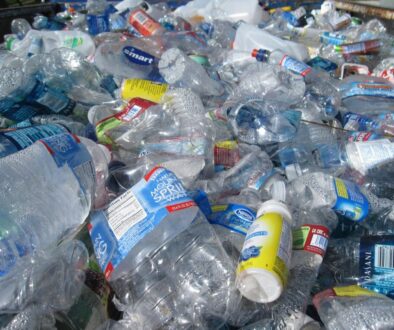FDA must fix food packaging rules for MAHA to matter, scientists say
A grim assessment of children’s health released by the Trump administration last month that pointed to several types of chemicals as contributors to chronic disease has scientists renewing calls for changes in regulatory oversight, particularly at the US Food and Drug Administration (FDA).
The FDA, like other federal agencies, has long maintained that common exposures to many pesticide residues and other chemical contaminants in foods are so low that they will not harm people’s health. But mounting research suggests otherwise, and many scientists have warned that the agency is missing “low-dose” effects and not properly evaluating potential harms from combinations of harmful chemicals.
“Where are they falling short in their testing? The answer is everywhere,” said Jerry Heindel, director of Healthy Environment and Endocrine Disruptor Strategies and former program director at the National Institute of Environmental Health Sciences. “They’re 50 years behind the times.”
Last month’s government report, released by the Make America Healthy Again (MAHA) Commission, highlighted chemicals such as bisphenol-A (BPA) and phthalates, which are often in food packaging and other plastics that are ubiquitous in modern life, as well as pesticides used in food production, as posing health risks.
Led by Health and Human Services Secretary (HHS) Robert F. Kennedy Jr., the MAHA report received mixed reviews from health advocates and drew criticism for some erroneous research citations. But the report sent a powerful message that Kennedy plans to use his position to push change at the FDA, which is part of HHS.

Among other things, Kennedy has made it clear in previous moves that he wants to strengthen government oversight of chemicals linked to health hazards. Kennedy already pledged to eliminate a controversial “loophole” that allows manufacturers to self-police on some new food ingredients and food packaging substances. And he has called for the removal of synthetic food dyes and other chemical additives.
If the FDA is to make any meaningful improvement in public health and achieve some of the changes Kennedy has championed, it must update and strengthen the rigor of its science and oversight of chemicals leaching from packaging into food, critics said.
An estimated 10,000 chemicals are used in food, food packaging or food processing equipment, with the FDA largely relying on industry tests to determine safety.
Emily Hilliard, HHS press secretary, defended current testing requirements, saying they are “robust” and “sufficient to ensure no harm will occur due to potential chronic effects.”
Dose makes the poison?
One consistent point of contention is the “dose makes the poison” mantra that has historically underpinned science around toxics. This works for compounds like lead — the more someone has in their body, the worse off they are. Research keeps finding that many modern chemicals don’t behave this way, however.
And many chemicals found in food packaging migrate into food. The FDA “anticipates that chemicals that come in contact with food through packaging could be present at low levels,” Hilliard said.
BPA, for example, is often found in metal food cans and hard plastic packaging but has been linked to reproductive and developmental problems at very low doses. Per- and polyfluoroalkyl substances, or PFAS, are shown to reduce immune system function and vaccine effectiveness at low doses (whereas high doses increase cancer risk and kidney and liver damage). Low levels of phthalates, used to make plastics flexible, are linked to brain and reproductive problems.
BPA, some types of PFAS, phthalates and other compounds are known as endocrine-disrupting chemicals, which alter hormones at low levels.
The FDA, however, maintains that “for an observed effect to be toxicologically relevant” an increasing dose must show an increasing health effect.
“Acute toxicity is not expected at the very low levels of exposure from use of chemicals in food packaging,” Hilliard said. “Acute toxicity studies, when available, are generally used to guide additional test recommendations and do not form the basis of a safety evaluation.”
The agency assumes that “any chemical that is in very small amounts will not cause a problem,” said Maricel Maffini, an environmental health researcher and independent consultant who has frequently pushed the FDA to update its testing requirements.
The FDA also says testing should show any health effects “in both sexes of test species.”
“Hormones are different in males and females so the endocrine-disruptors are going to affect males differently than females,” Heindel said.
The agency relies on what’s referred to as guideline studies, which generally focus on how overtly toxic a chemical is, rather than the unique effects of endocrine-disrupting chemicals. This difference played out publicly during a project called Consortium Linking Academic and Regulatory Insights on BPA Toxicity, or CLARITY, which launched in 2012 and was aimed at combining government and academic studies to end the long dispute over BPA’s health effects.
“Hormones are different in males and females so the endocrine-disruptors are going to affect males differently than females.” -Jerry Heindel, Healthy Environment and Endocrine Disruptor Strategies
The FDA gathered up the findings and found “that currently authorized uses of BPA continue to be safe for consumers,” according to a statement from Stephen Ostroff, then-deputy commissioner for foods and veterinary medicine at the FDA. Independent scientists, including Heindel and Zoeller, looked at the exact same studies and found the opposite — that BPA was harmful and effects were largely seen at the lowest doses used in the studies.
“Developmental exposure to BPA can lead to adverse effects in multiple organ systems, including the brain, prostate gland, urinary tract, ovary, mammary gland, and heart … many effects were at the lowest dose tested,” the authors wrote.

In response to these studies and others, the FDA’s European counterpart, the European Food Safety Authority, banned BPA and similar bisphenols in food contact materials. The FDA, however, still says BPA is safe at current exposure levels. But BPA is just the tip of the iceberg — there are an estimated 950 substances in our food that are not allowed in Europe, reflecting different interpretations of the same science.
Hilliard pointed out the FDA banned numerous phthalates — but not all — from food contact and said the FDA is “currently reviewing the remaining authorized phthalates and a petition for BPA.”
Chemical mixtures
The FDA, like the Environmental Protection Agency (EPA), evaluates the toxicity of each chemical individually, while humans are routinely exposed to multiple chemicals in everything from the air they breathe to the food they consume and the products they use. When reviewing a new chemical that will come into contact with food, the FDA first evaluates how much the substance could migrate into food via cooking or storage to estimate people’s exposure. The estimated exposure is then evaluated against available data on how toxic it is.
The agency keeps a running list of new substances approved to contact food, which could include chemicals in boxes and bags that are used to store food or compounds used in machinery in food factories. Since Trump took office, 18 petitioned substances have been approved for food contact, including carbon black, which is considered “possibly carcinogenic to humans” by the International Agency for Research on Cancer.
“The whole concept of looking at one chemical at a time, and that each chemical is innocent until proven guilty, is a killer,” said Thomas Zoeller, professor of biology at the University of Massachusetts. “I mean, that’s a killer literally.”
Jane Muncke, managing director and chief scientific officer at the Food Packaging Forum, said considering the toxicity of each new substance on its own to determine whether or not it’s safe “ignores the reality of mixed toxicity.”
“The science is established that mixtures of chemicals present below the individual threshold can cause effects,” she said.
Muncke and others published a study in Nature last year that found roughly 3,600 food contact chemicals have been detected in humans, and at least 80 — including BPA, phthalates and some PFAS — are linked to health concerns.
GRAS “loophole”
In addition to the thousands of chemicals approved for food contact use, the FDA allows even more under what’s called GRAS designation, an acronym for “generally recognized as safe.”
“The science is established that mixtures of chemicals present below the individual threshold can cause effects.” -Jane Muncke, Food Packaging Forum
Through a voluntary notification system, a company can inform the FDA that a substance it plans to use warrants the GRAS designation. If the FDA agrees, the company bypasses the normal FDA reviews that would be required.
A 2022 analysis by the Environmental Working Group found that about 99% of new chemicals introduced into food and food contact materials since 2000 were through GRAS.
Kennedy said in March he’d eliminate GRAS. “For far too long, ingredient manufacturers and sponsors have exploited a loophole that has allowed new ingredients and chemicals, often with unknown safety data, to be introduced into the US food supply without notification to the FDA or the public,” he said in a statement.
While industry groups had a mixed response to the GRAS March announcement, they’ve expressed support for current FDA testing requirements.
Kimberly Wise White, vice president, regulatory and scientific affairs at the American Chemistry Council, said the FDA has a “rigorous, science-based process for authorizing and evaluating substances that come in contact with food.”
“We are witnessing a rapid evolution of regulatory safety science with the emergence of new methods that reduce or eliminate animal testing, computational tools that harness vast data sources, and the emergence of AI to help synthesize knowledge to assess the safety of food packaging,” Wise White said. “Regulatory processes should continue to evolve and incorporate the best available methods to minimize risk.”
But scientists say there are already new methods — including low dose and chemical mixtures studies — that the agency can and should be using.
“They have a strict adherence to some kind of mid-20th century concept of toxicology that they are not giving up on,” Zoeller said.
(Featured image by the US FDA)



